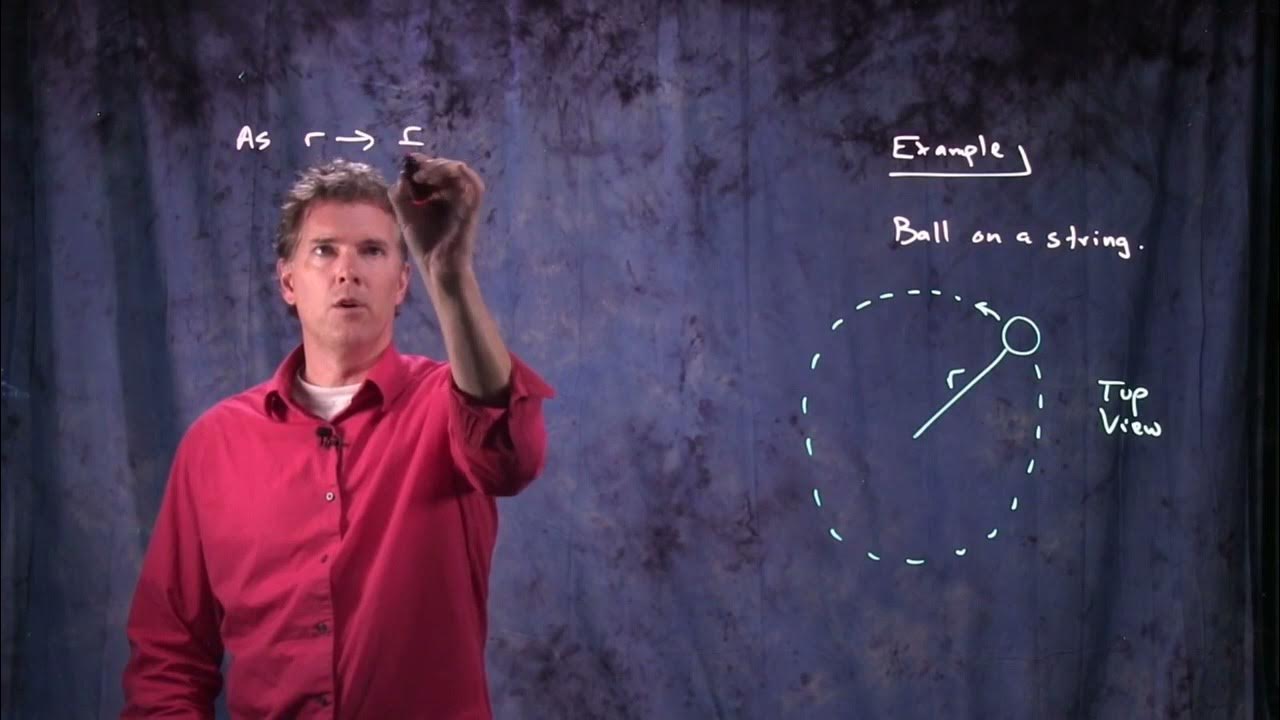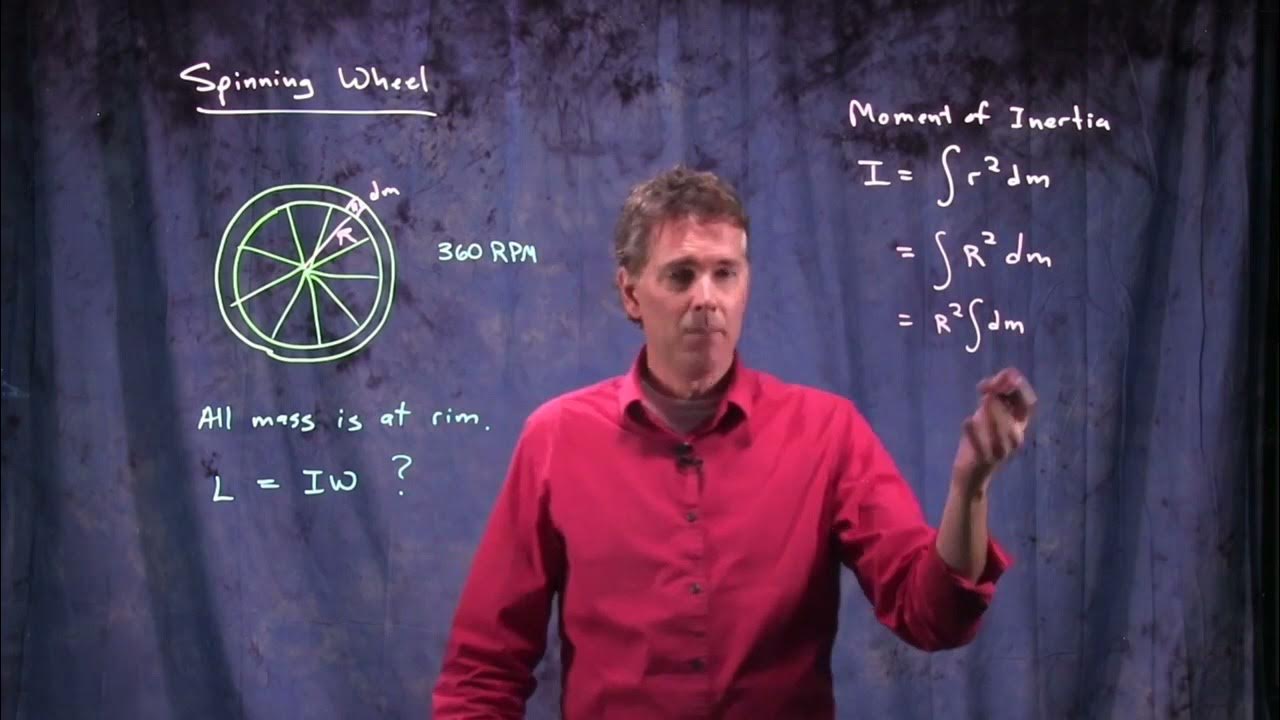Angular Momentum - Basic Introduction, Torque, Inertia, Conservation of Angular Momentum
TLDRThis video delves into the concepts of linear and angular momentum, highlighting their similarities and differences. Linear momentum is defined as mass times velocity, while angular momentum relates to rotational motion and is given by inertia times angular velocity. The video also explains how momentum and angular momentum are conserved in the absence of external forces or torques, using examples like a merry-go-round to illustrate changes in angular speed due to alterations in inertia. The content is aimed at viewers seeking to understand the fundamental principles of momentum in physics.
Takeaways
- 🌟 Linear momentum is defined as the mass of an object times its velocity (p = mv).
- 🔄 Angular momentum is the rotational equivalent of linear momentum, represented as the product of an object's moment of inertia (I) and its angular velocity (ω).
- 📈 Both linear and angular momentum are vector quantities, meaning they have both magnitude and direction.
- 🔧 Newton's second law relates force to an object's mass and acceleration (F = ma), while the torque acting on an object is the product of its moment of inertia and angular acceleration (τ = Iα).
- 🚀 Angular acceleration is the change in angular velocity divided by the change in time (α = Δω/Δt).
- ⚖️ The net torque on an object is equal to the change in its angular momentum over time (Δτ/Δt = ΔL/Δt), similar to how net force is related to the change in linear momentum.
- 🔄 The principle of conservation of momentum states that linear momentum is conserved when the net external force on an object is zero, especially in collisions.
- 🔄 Similarly, angular momentum is conserved when no external torques act on a system (ΔI_initialω_initial = ΔI_finalω_final).
- 🎢 When an object's inertia increases, its angular speed decreases to maintain constant angular momentum, and vice versa.
- 🌐 An example of angular momentum conservation is a merry-go-round where adding a box increases the system's inertia, thus decreasing its angular speed while keeping the angular momentum constant.
Q & A
What is linear momentum?
-Linear momentum is the product of an object's mass and its velocity, represented by the lowercase 'p'. It is a measure of the motion of an object and is inherent to anything that is moving.
How is angular momentum similar to linear momentum?
-Angular momentum is similar to linear momentum in that it is a measure of motion, but instead of linear motion, it pertains to rotational motion. It is calculated as the product of an object's moment of inertia and its angular velocity.
What are the components of angular momentum?
-Angular momentum consists of two components: the object's moment of inertia (which is proportional to the mass and its distribution) and its angular velocity (how fast the object is spinning).
Is angular momentum a vector quantity?
-Yes, angular momentum is a vector quantity, meaning it has both magnitude and direction.
What does Newton's second law state in relation to angular motion?
-Newton's second law, in relation to angular motion, states that the net torque acting on an object is equal to the product of the object's moment of inertia and its angular acceleration.
How is angular acceleration defined?
-Angular acceleration is defined as the change in angular velocity divided by the change in time.
What is the relationship between torque and change in angular momentum?
-The net torque on an object is equal to the change in the object's angular momentum (delta L) divided by the change in time. This is analogous to the net force being equal to the change in linear momentum over time.
Under what conditions is linear momentum conserved?
-Linear momentum is conserved when the net external force acting on an object or a system of objects is zero, such as in the case of a collision or when no external forces are present.
How does the conservation of angular momentum work?
-The conservation of angular momentum states that if there are no external torques acting on a system, the initial and final angular momenta will be the same. This means that if the net torque is zero, the product of the moment of inertia and angular velocity before and after an event remains constant.
What happens to the angular speed if the inertia of a rotating system increases?
-If the inertia of a rotating system increases, the angular speed will decrease to maintain a constant angular momentum, assuming no external torques are acting on the system.
Provide an example of how changing inertia affects angular momentum.
-Consider a merry-go-round with an initial inertia of 500 kg·m² spinning at 2 radians per second. If a box is placed on the merry-go-round, increasing its inertia to 600 kg·m², the angular speed will decrease (to approximately 1.67 radians per second) to keep the angular momentum constant (which is 1000 kg·m²·s in this case).
Outlines
🚀 Introduction to Angular Momentum
This paragraph introduces the concept of angular momentum, drawing parallels with linear momentum. It explains that linear momentum is the product of mass and velocity, and similarly, angular momentum is related to the mass of an object in rotational motion, calculated as the product of inertia (a measure of an object's resistance to rotational changes) and angular velocity (how fast the object is spinning). The paragraph emphasizes that both linear and angular momentum are vector quantities, having both magnitude and direction. It also introduces related equations, such as Newton's second law applied to rotational motion, and the principle of conservation of momentum, both linear and angular, in the absence of external forces or torques.
🎡 Conservation of Angular Momentum and its Implications
The second paragraph delves into the conservation of angular momentum, using the example of a merry-go-round to illustrate the concept. It explains that if the net external torque on a system is zero, the total angular momentum remains constant. The paragraph shows how the addition of a box to a merry-go-round increases its inertia, which in turn affects its angular speed while keeping the angular momentum constant. The calculation provided demonstrates how the new angular speed can be determined when the inertia changes due to the addition of mass. This example highlights the relationship between an object's inertia, angular velocity, and the conservation of angular momentum.
Mindmap
Keywords
💡Angular Momentum
💡Linear Momentum
💡Inertia
💡Omega (Angular Velocity)
💡Torque
💡Angular Acceleration
💡Conservation of Momentum
💡Newton's Second Law
💡Moment of Inertia
💡Collision
💡Vector Quantity
Highlights
Linear momentum is mass times velocity, represented by lowercase p.
Momentum is the product of an object's mass and its velocity, indicating its motion.
Angular momentum is similar to linear momentum but involves rotational motion.
Angular momentum is equal to inertia times omega, depending on the object's mass distribution and spinning speed.
Both linear and angular momentum are vector quantities, having magnitude and direction.
Inertia is the rotational equivalent of mass, and angular velocity is the rotational equivalent of linear velocity.
Newton's second law relates net force to mass and acceleration, while torque is related to inertia and angular acceleration.
The change in momentum is equal to the product of inertia and the change in angular velocity over time.
Linear momentum is conserved when the net external force on an object is zero.
In a collision or isolated system, the total linear momentum remains constant if no external forces act.
Angular momentum is also conserved when no external torques act on a system.
If the inertia of a system increases, the angular speed decreases to maintain constant angular momentum.
The example of a merry-go-round illustrates how adding mass changes inertia and thus affects angular speed.
Conservation of angular momentum is demonstrated when adding a box to a merry-go-round, resulting in a decrease in angular speed.
The final angular speed can be calculated using the initial angular momentum and the new inertia.
Dropping a box without generating torque maintains the system's angular momentum.
Transcripts
Browse More Related Video

Conservation of Angular Momentum

What Is Angular Momentum?

AP Physics Workbook 7.I Collisions "Old and Lack Full Explanation"

AP Physics 1 review of Torque and Angular momentum | Physics | Khan Academy

Conservation of Angular Momentum | Physics with Professor Matt Anderson | M12-18

Angular Momentum of a Spinning Wheel | Physics with Professor Matt Anderson | M12-16
5.0 / 5 (0 votes)
Thanks for rating: